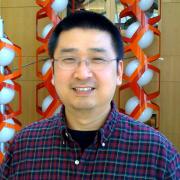- Home
- Principal Investigators
- David Agard, PhD
- Yifan Cheng, PhD
- Charles Craik, PhD
- Seemay Chou, PhD
- Roger Cooke, PhD
- James Fraser, PhD
- Adam Frost, PhD, MD
- John Gross, PhD
- Natalia Jura, PhD
- Wendell Lim, PhD
- Aashish Manglik, PhD, MD
- Daniel Minor, PhD
- Oren Rosenberg, MD, PhD
- John Sedat
- Kevan Shokat, PhD
- Robert Stroud, PhD
- Jonathan Weissman, PhD
- Allison Williams, PhD
- X-ray Crystallography
- Electron Microscopy
- MPEC










